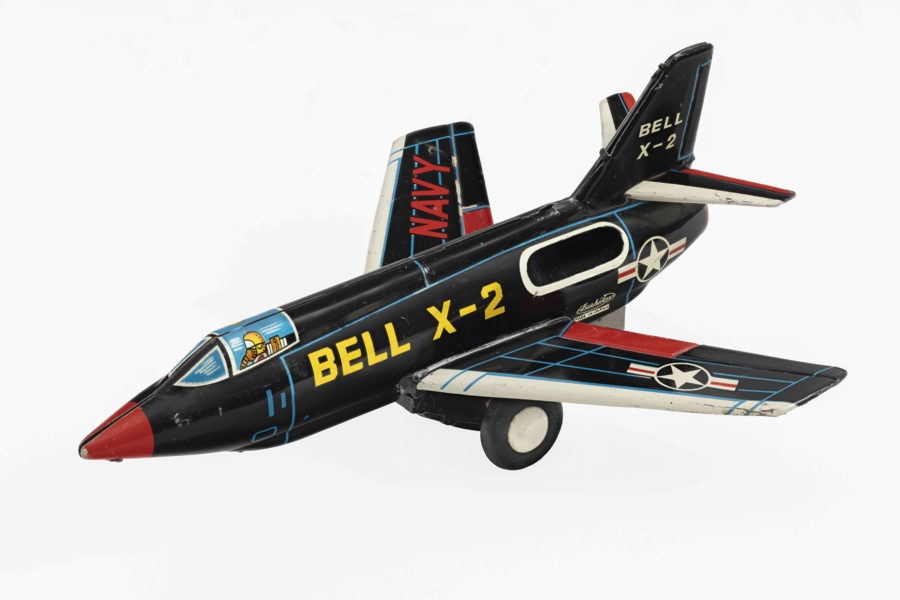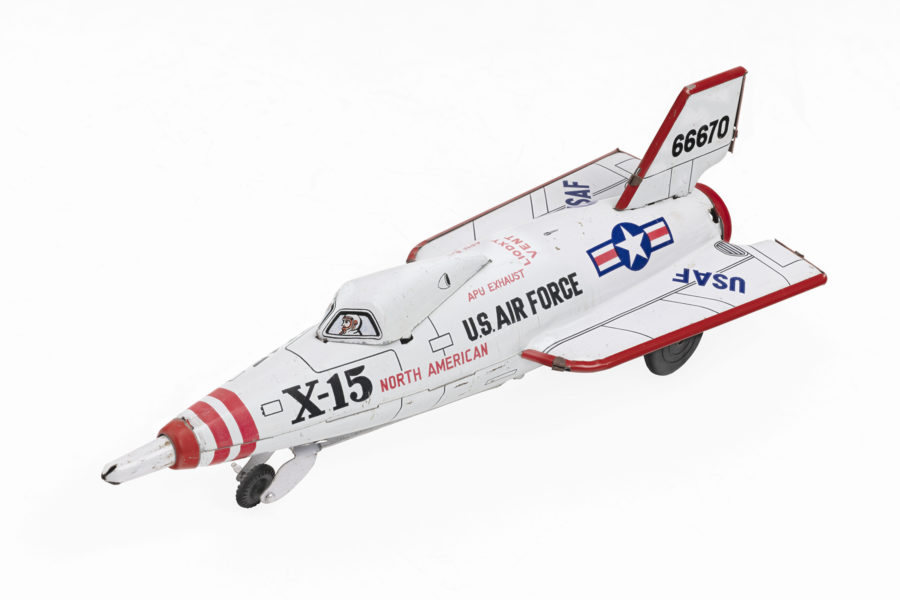The Bell X.2 and North American X-15 were developed to study not only supersonic speeds at high altitudes and the phenomena they induce—heat barriers, aerodynamic friction—but also techniques for re-entering the atmosphere.
These aircraft did not escape the attention of Japanese toy manufacturers.
The Bell X.2, piloted by Captain Milburn G. Apt, made 20 flights between June 1952 and September 1956.
Asahi Toy

1955, lithographed sheet metal, friction mechanism, rolls on the ground, 5.5 x 7.5 inches.
Of the 12 pilots of the X-15, including Neil Armstrong, only Joe Walker crossed the Kármán line, reaching an altitude of 107.8 km and breaking the altitude record with a speed of 6,605 km/h during another flight.
NASA recognized them as astronauts.
Masuya

Early 1960s, lithographed sheet metal, friction mechanism, rolls on the ground, when the arrow hits an obstacle, the plane stands upright, 8 x 24 cm.
Beyond 100 km from the Kármán line, lift flight becomes impossible, giving way to rockets.
Thirteen years after the last flight of the X-15, Neil Armstrong took that small step, a giant leap for mankind!
